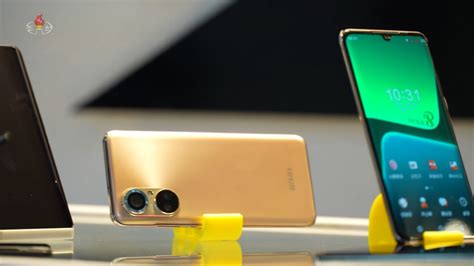
A North Korean smartphone, smuggled out of the country and analyzed by the Open Technology Fund (OTF), reveals a tightly controlled mobile ecosystem where access to information is severely restricted and surveillance is pervasive, shocking tech experts with its limitations and security measures. The device, running a modified version of Android, underscores the lengths the regime goes to in monitoring and controlling its citizens’ digital lives.
The alarming degree of state control embedded within North Korean technology has been laid bare by a smuggled smartphone analyzed by the Open Technology Fund. The phone, whose brand name remains undisclosed in the original report to protect potential individuals in North Korea, presents a stark illustration of the technological constraints imposed on ordinary citizens in the reclusive nation. Tech experts are expressing astonishment at the extent of the restrictions, surveillance mechanisms, and the heavily modified Android operating system that governs every aspect of the device’s functionality.
According to the Open Technology Fund, the smartphone is not merely a tool for communication but a vehicle for pervasive state monitoring. Every application, every website visited, and every piece of media consumed is subject to scrutiny by the North Korean government. This level of control extends to preventing users from tampering with the operating system or accessing unauthorized content.
“The level of control the North Korean government exerts over its citizens’ digital lives is staggering,” said Sarah Aoun, a researcher at the Open Technology Fund, in the full report. “This phone is a window into a world where technology is used as a tool for surveillance and repression.”
The modified Android operating system features several layers of security designed to prevent unauthorized access or modification. The phone is configured to prevent users from sideloading apps (installing apps from sources other than the official app store, which is also state-controlled), and any attempt to root the device (gaining administrative privileges) is met with immediate countermeasures, potentially rendering the phone unusable.
Further analysis reveals that the smartphone is preloaded with a suite of government-approved applications. These apps provide access to state-run media, educational resources, and communication tools, but they are all subject to censorship and monitoring. The phone also includes features that allow the government to track the user’s location and remotely disable certain functions.
The implications of this technology extend beyond mere censorship. The North Korean government uses the smartphone to create a digital profile of each user, tracking their behavior, interests, and social connections. This data can then be used to identify potential dissidents or those who violate the regime’s strict laws.
The discovery of this smartphone has sparked concern among human rights organizations and technology experts alike. They argue that the North Korean government is using technology to create a digital prison for its citizens, limiting their access to information and suppressing dissent.
“This is a clear example of how technology can be used as a tool for oppression,” said Greg Scarlatoiu, Executive Director of the Committee for Human Rights in North Korea. “The North Korean government is using smartphones to control its citizens’ thoughts and actions, creating a society where freedom of expression is virtually non-existent.”
The analysis of the smuggled smartphone also highlights the challenges faced by those trying to access information in North Korea. While some citizens have access to foreign media and information through illicit channels, the government is constantly working to tighten its control over the flow of information.
“It is becoming increasingly difficult for North Koreans to access outside information,” said Sokeel Park of Liberty in North Korea (LiNK), an organization that supports North Korean refugees. “The government is cracking down on smuggling and using technology to monitor and control its citizens’ access to information.”
The revelations about the North Korean smartphone have renewed calls for international pressure on the regime to respect human rights and allow greater freedom of expression. Some experts argue that technology companies should also play a role in ensuring that their products are not used to facilitate human rights abuses.
“Technology companies have a responsibility to ensure that their products are not used to suppress freedom of expression or violate human rights,” said a spokesperson for Amnesty International. “They should work with human rights organizations to develop safeguards that prevent their technology from being used for these purposes.”
The analysis of the North Korean smartphone serves as a stark reminder of the challenges faced by those living under authoritarian regimes. It also underscores the importance of promoting freedom of expression and access to information in all parts of the world. The incident underscores the desperate need for increased access to uncensored information and communication tools for the North Korean people.
The smuggled phone runs a heavily modified version of Android, making it nearly impossible for users to access unsanctioned content or applications. It’s a closed ecosystem designed to allow state control over all digital activity. Any attempt to tamper with the device’s software can render it unusable, reinforcing the regime’s iron grip on technology.
The findings from the Open Technology Fund have ignited discussions among technologists, policymakers, and human rights advocates on how to address the digital repression in North Korea. Strategies being considered range from developing circumvention tools to providing North Koreans with access to foreign media and information through smuggled devices or clandestine networks.
The implications of this digital control are far-reaching. With the North Korean government having access to the digital footprint of its citizens, every message, search query, and app usage becomes a potential source of surveillance and control. This level of intrusion deeply impacts the daily lives of North Koreans, curtailing their ability to express themselves freely, access diverse information, or organize independently.
The discovery of this tightly controlled smartphone reveals the extent to which North Korea’s government is willing to go to maintain its grip on power. It highlights the urgent need for the international community to address the digital repression in North Korea and to find ways to promote freedom of expression and access to information for the North Korean people. The incident is a chilling reminder of how technology can be weaponized to suppress human rights and maintain authoritarian control.
The analysis of the device also sheds light on the limitations faced by ordinary North Koreans in accessing information and communicating with the outside world. Despite the government’s efforts to isolate its citizens, some individuals still manage to access foreign media and information through illicit channels. However, the risks associated with such activities are significant, and those caught face severe punishment.
The unveiling of the North Korean smartphone has prompted calls for increased international pressure on the regime to respect human rights and allow greater freedom of expression. It has also sparked discussions about the role of technology companies in ensuring that their products are not used to facilitate human rights abuses. The incident serves as a stark reminder of the challenges faced by those living under authoritarian regimes and underscores the importance of promoting freedom of expression and access to information in all parts of the world.
The level of digital control exemplified by the North Korean smartphone raises serious concerns about privacy, freedom of expression, and human rights. It serves as a cautionary tale about the potential for technology to be used as a tool of oppression. The international community must work together to address the digital repression in North Korea and to support the efforts of those who are working to promote freedom of expression and access to information for the North Korean people.
The smuggled phone reveals a software environment where even the simplest tasks are monitored and controlled. The pre-installed apps offer limited functionality, and access to the internet is severely restricted. Users are only able to access a curated list of websites approved by the government, effectively isolating them from the global information ecosystem.
The fact that the Open Technology Fund had to analyze a smuggled phone underscores the difficulty in obtaining reliable information about North Korea. The country is notoriously secretive, and access to information is tightly controlled. However, the analysis of this phone provides a rare glimpse into the digital lives of ordinary North Koreans and the extent to which their freedom is curtailed.
The phone’s security measures are not designed to protect users from cyber threats, but rather to prevent them from accessing unauthorized content or tampering with the device’s software. This highlights the government’s primary concern: maintaining control over information and preventing dissent.
The unveiling of the North Korean smartphone serves as a wake-up call to the international community. It is a reminder that technology can be used for both good and evil, and that it is essential to ensure that it is used to promote freedom and human rights, rather than to suppress them. The incident underscores the urgent need for increased international efforts to address the digital repression in North Korea and to support the efforts of those who are working to promote freedom of expression and access to information for the North Korean people.
The operating system on the phone has been so heavily modified that it bears little resemblance to standard Android. The North Korean government has essentially created its own version of the operating system, one that is designed to give it complete control over the device.
The analysis of the phone has also revealed details about the hardware it uses. While the phone’s components are not cutting-edge, they are sufficient for the tasks that the government allows users to perform. The phone also includes a number of security features that are designed to prevent users from accessing unauthorized content or tampering with the device’s software.
The unveiling of the North Korean smartphone has prompted a wide range of reactions from experts and commentators. Some have expressed shock at the extent of the government’s control over its citizens’ digital lives, while others have warned that the phone is a sign of things to come. Regardless of their specific views, most agree that the incident underscores the urgent need for increased international efforts to address the digital repression in North Korea and to support the efforts of those who are working to promote freedom of expression and access to information for the North Korean people.
The smartphone acts as a symbol of the broader restrictions and oppression faced by the North Korean populace. While the rest of the world enjoys the benefits of open communication and access to information, North Koreans are subjected to a digital environment that is tightly controlled and monitored.
The analysis of the smartphone serves as a powerful indictment of the North Korean regime’s human rights record. It highlights the government’s willingness to use technology to suppress dissent and maintain its grip on power. The incident underscores the urgent need for increased international pressure on the regime to respect human rights and allow greater freedom of expression.
The revelations regarding the North Korean smartphone could potentially influence international policy and diplomatic efforts toward North Korea. The evidence of extensive digital surveillance may strengthen calls for sanctions or other measures aimed at promoting human rights and freedom of expression within the country.
The discovery underscores the resourcefulness of North Korean citizens seeking outside information, despite the severe risks involved. Smuggling such a device out of the country is a testament to the desire for connectivity and access to the broader world.
The heavily modified Android system on the North Korean phone presents significant cybersecurity challenges. Security researchers would be particularly interested in identifying vulnerabilities in the system that could potentially be exploited to deliver uncensored information or bypass surveillance mechanisms.
The limited functionality and restricted access of the North Korean smartphone highlight the stark digital divide between North Korea and the rest of the world. This divide not only affects access to information but also limits opportunities for education, economic development, and cultural exchange.
The Open Technology Fund’s analysis of the North Korean smartphone offers valuable insights into the country’s technological capabilities and the strategies it employs to control its citizens. This information can be used to develop more effective strategies for promoting freedom of expression and access to information in North Korea.
The situation reveals the importance of promoting digital literacy and providing access to secure communication tools for vulnerable populations around the world. By empowering individuals with the skills and resources they need to navigate the digital landscape safely and effectively, we can help them to resist censorship and protect their privacy.
The North Korean smartphone serves as a microcosm of the broader challenges facing human rights defenders in the digital age. As governments around the world increasingly use technology to monitor and control their citizens, it is essential to develop strategies for protecting freedom of expression and promoting digital rights.
The analysis of the North Korean smartphone is a testament to the power of open-source technology and the importance of collaboration in the fight for digital freedom. By working together, we can develop tools and strategies that empower individuals to resist censorship and protect their privacy.
The findings may encourage further investigations and analyses of other North Korean technologies and digital infrastructure. This could uncover more details about the country’s surveillance capabilities and the extent of its digital control.
The phone’s existence and functionality serve as a warning about the potential for technology to be used for repressive purposes. It highlights the need for vigilance and proactive measures to ensure that technology is used to promote freedom and human rights, rather than to suppress them.
The modified Android system may contain unique cryptographic algorithms or security protocols developed by North Korean engineers. Analyzing these could provide insights into the country’s technological expertise and its approach to cybersecurity.
The limited app selection on the phone reveals the government’s priorities in terms of information dissemination and control. By studying the types of apps that are pre-installed, researchers can gain a better understanding of the regime’s propaganda efforts and its attempts to shape public opinion.
The North Korean smartphone underscores the importance of international collaboration in promoting digital freedom. By working together, governments, NGOs, and technology companies can develop strategies to circumvent censorship and provide access to uncensored information for people living under authoritarian regimes.
The existence of this tightly controlled smartphone demonstrates the lengths to which totalitarian regimes will go to maintain power through technological means. It serves as a chilling example of digital authoritarianism and the challenges faced by those living under such regimes.
Frequently Asked Questions (FAQ)
1. What is the main finding of the Open Technology Fund’s analysis of the smuggled North Korean smartphone?
The main finding is that the smartphone reveals an extremely controlled digital ecosystem in North Korea, characterized by pervasive state surveillance, heavily restricted access to information, and a modified Android operating system designed to prevent unauthorized use or access to outside content. The level of control over citizens’ digital lives is staggering.
2. How does the North Korean government control the content accessed on these smartphones?
The North Korean government heavily modifies the Android operating system to prevent users from sideloading apps or rooting the device. It also pre-installs government-approved applications that provide access to state-run media, educational resources, and communication tools, all subject to censorship and monitoring. Access to the internet is severely restricted, with users only able to access a curated list of websites approved by the government.
3. What are the implications of this level of digital control for ordinary North Koreans?
The implications are far-reaching. Every message, search query, and app usage becomes a potential source of surveillance and control. This level of intrusion deeply impacts the daily lives of North Koreans, curtailing their ability to express themselves freely, access diverse information, or organize independently. The government uses the smartphone to create a digital profile of each user, tracking their behavior, interests, and social connections.
4. What can the international community do to address the digital repression in North Korea?
Strategies being considered range from developing circumvention tools to providing North Koreans with access to foreign media and information through smuggled devices or clandestine networks. There are calls for increased international pressure on the regime to respect human rights and allow greater freedom of expression. Some experts argue that technology companies should also play a role in ensuring that their products are not used to facilitate human rights abuses. Promoting digital literacy and providing access to secure communication tools are also crucial.
5. How does this North Korean smartphone compare to smartphones used in other countries in terms of security features?
The security features in the North Korean smartphone are primarily designed to prevent users from accessing unauthorized content or tampering with the device’s software, rather than to protect users from cyber threats like malware or hacking. This is a key difference from smartphones in other countries, where security features are typically focused on protecting user data and privacy from external threats. The phone is configured to prevent users from sideloading apps (installing apps from sources other than the official app store, which is also state-controlled), and any attempt to root the device (gaining administrative privileges) is met with immediate countermeasures, potentially rendering the phone unusable.









